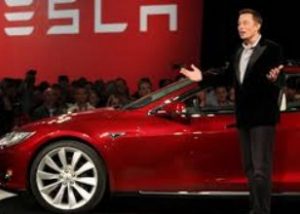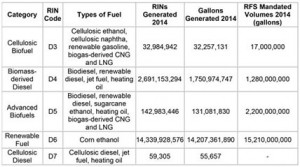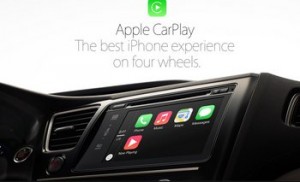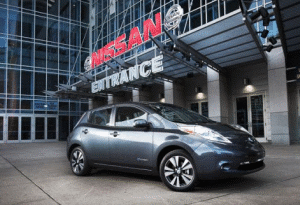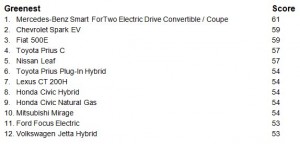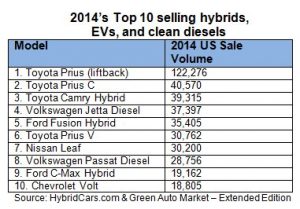by Jon LeSage, editor and publisher, Green Auto Market
Here’s my take on the 10 most significant and interesting occurrences during the past week…….
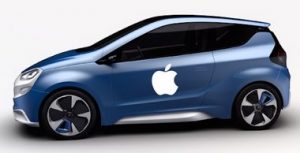 Is Apple becoming an electric automaker competing directly with Tesla and the majors? The answer is yet to be determined, but it stirred up a media frenzy last week as big as Google’s self-driving car venture last year. The stories were captivating: lithium battery maker A123 Systems sues Apple for allegedly stealing away top engineers to build its own battery pack – and these and other Apple engineers are likely to apply for several patents protecting the new technology. Sources told media that Apple is working on an electric car that may roll out by 2020. The Wall Street Journal piece that started the wave of coverage said that Apple’s secret project has been named “Project Titan,” and hundreds of Apple employees have been assigned to design the electric minivan. Apple has large cash reserves and could be positioning itself to offer cutting-edge technologies for cars that could be as significant as the iPhone has been in the smartphone space. Former General Motors vice chairman Bob Lutz doubts Apple will be setting up vehicle manufacturing assembly plants. “Do I think they are going to work with vehicles? Yes,” Lutz said. “Do I think they intend to produce entire cars? No.”
Is Apple becoming an electric automaker competing directly with Tesla and the majors? The answer is yet to be determined, but it stirred up a media frenzy last week as big as Google’s self-driving car venture last year. The stories were captivating: lithium battery maker A123 Systems sues Apple for allegedly stealing away top engineers to build its own battery pack – and these and other Apple engineers are likely to apply for several patents protecting the new technology. Sources told media that Apple is working on an electric car that may roll out by 2020. The Wall Street Journal piece that started the wave of coverage said that Apple’s secret project has been named “Project Titan,” and hundreds of Apple employees have been assigned to design the electric minivan. Apple has large cash reserves and could be positioning itself to offer cutting-edge technologies for cars that could be as significant as the iPhone has been in the smartphone space. Former General Motors vice chairman Bob Lutz doubts Apple will be setting up vehicle manufacturing assembly plants. “Do I think they are going to work with vehicles? Yes,” Lutz said. “Do I think they intend to produce entire cars? No.”- The US Environmental Protection Agency (EPA) is updating fuel economy test procedures to make them more accurate than they’ve been criticized for being in the past couple of years. The revision focuses on testing rolling resistance and aerodynamic drag of vehicles as they roll from 70 mph to a stop on a straight, flat track. These calculations are used to program dynamometers that determine fuel economy ratings in EPA test cycles. The new standards will need to more accurately address the effects of road load levels over a broad range of speed. The EPA will be meeting with automakers in the next few months to discuss their testing procedures, said Chris Grundler, director of the EPA’s Office of Transportation Air Quality.
- West coast ports may see their work stoppage go away and shipping go back to normal. The International Longshore and Warehouse Union and Pacific Maritime Association have reached tentative agreement on a new labor contract that had been backing up cargo carriers in long lines in recent weeks. Japanese automakers had been feeling the squeeze, especially Honda which said that the backup cost the automaker about 25,000 vehicles in lost production. US Labor Secretary Thomas Perez last week brokered a deal in San Francisco between the union and a group of shipping companies.
- Fisker Automotive is considering three options for its company name: eLux Technology, Elux Automotive, or keeping its current name. According to an inside source, including “Lux” in the name could commemorate the company’s chairman, Lu Guanqui; the Chinese billionaire and founder of Wanxiang Group Corp. acquired Fisker about a year ago in bankruptcy court for $149.2 million in cash.
- For those interested in working with the US military on advanced vehicle technology projects…… the US Marine Corp. issued a Request for Information (RFI) for its next Expeditionary Energy Concepts technology demonstration that will be held June 23-25, 2015, at Camp Lejeune, NC. Three vehicle technology areas will be included in this year’s demonstration: hybrid/electric all-terrain vehicles; advanced batteries and energy storage; and fuel cells up to 10 kW. The deadline to respond to the RFI is Friday, March 6.
- Tesla Motors has a diverse group of backers in its fight against franchised dealers. Ten public-interest groups have signed a letter to US governors and legislators supporting Tesla’s right to directly sell its electric vehicles at retail stores across the country. Among the 10 groups were the environmentalist Sierra Club and Americans for Prosperity – a political action group founded by the Koch brothers. In other news, Tesla may be granted permission to open up to 12 stores in Texas. Six state legislators have filed bills that would give permission to Tesla to directly sell to customers.
- Navigant Research expects electric vehicle supply equipment (EVSE) to see big gains in coming years. Global revenue for EVSE charging services should grow from $81.1 million in 2014 to $2.9 billion in 2023. That would include residential and commercial electric vehicle charging for Level 1, Level 2, DC fast charging, and wireless EVSE.
- Volvo will be launching an autonomous vehicle pilot program by 2017. The Drive Me project will use Volvo vehicles equipped with a variety of sensors designed to detect weather and traffic, pedestrians, and other safety and mobility factors. Some of that data will come from a combined radar and camera system mounted at the top of the windshield.
- Ryder System has set up an online natural gas vehicle maintenance program for all of its North American maintenance network with more than 6,000 employees at Ryder’s 800 facilities. Technicians will learn about the entire spectrum of all natural gas vehicle platforms and configurations. Ryder trucks have put in more than 30 million miles driven as natural gas vehicles for the commercial transportation industry; the company has 14 natural gas vehicle maintenance facilities and 260 natural gas vehicle trained technicians.
- California Air Resources Board received a letter signed by about 100 businesses, organizations and individuals, highlighting key benefits of the state’s six-year-old Low Carbon Fuel Standard. Key benefits mentioned in the letter included diversifying the state’s fuel supply and increasing independence from fluctuating oil prices and gas pump prices; spurring greater use of clean alternative fuels and vehicles; and cutting air pollution and improving public health.



